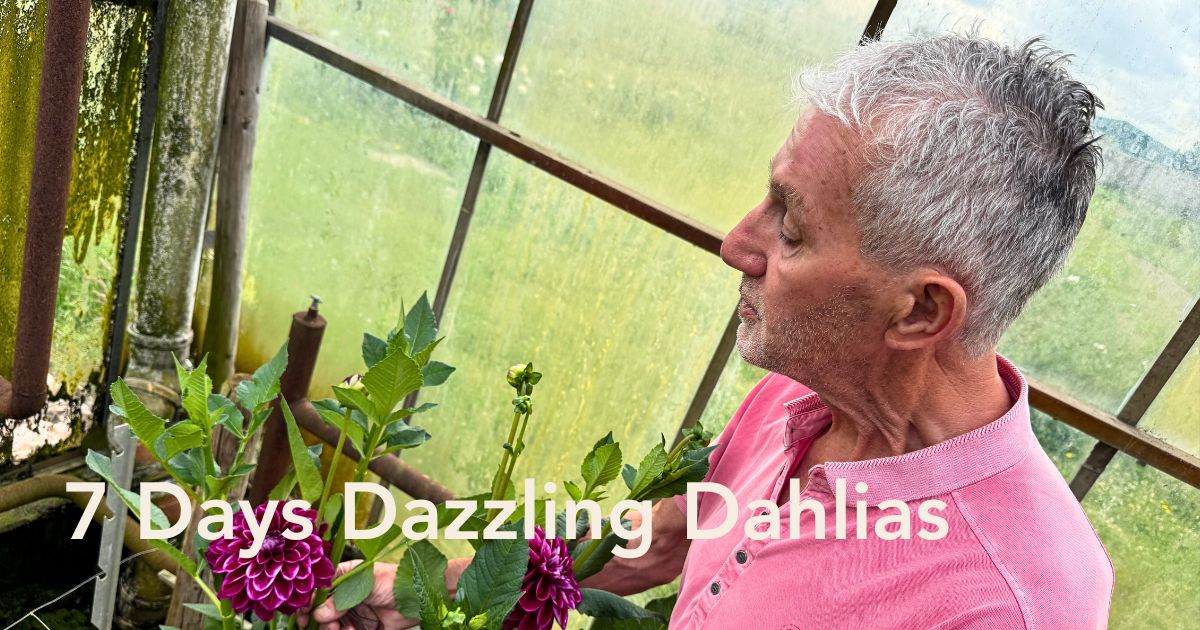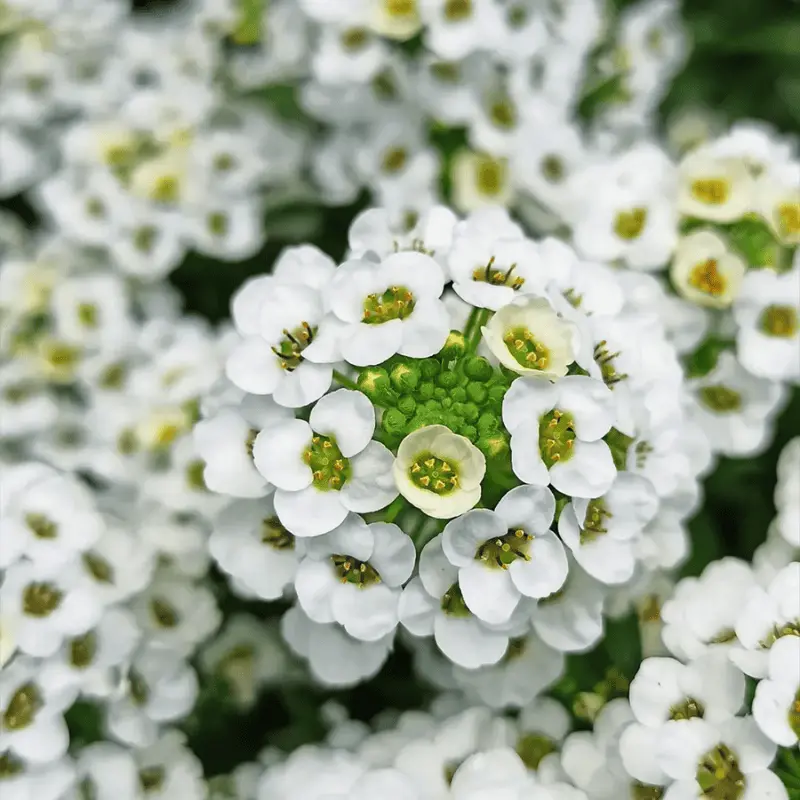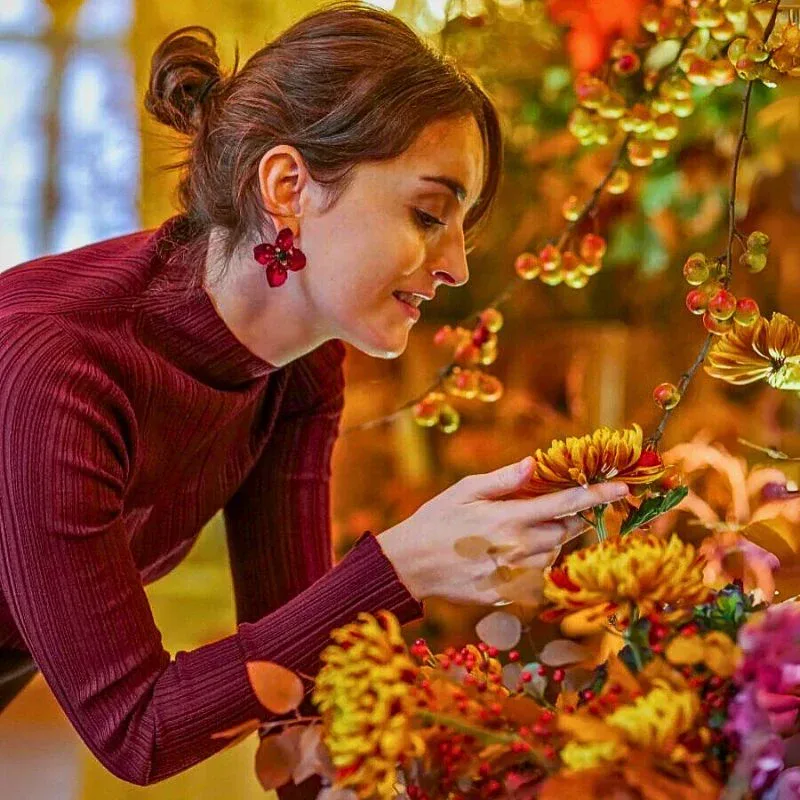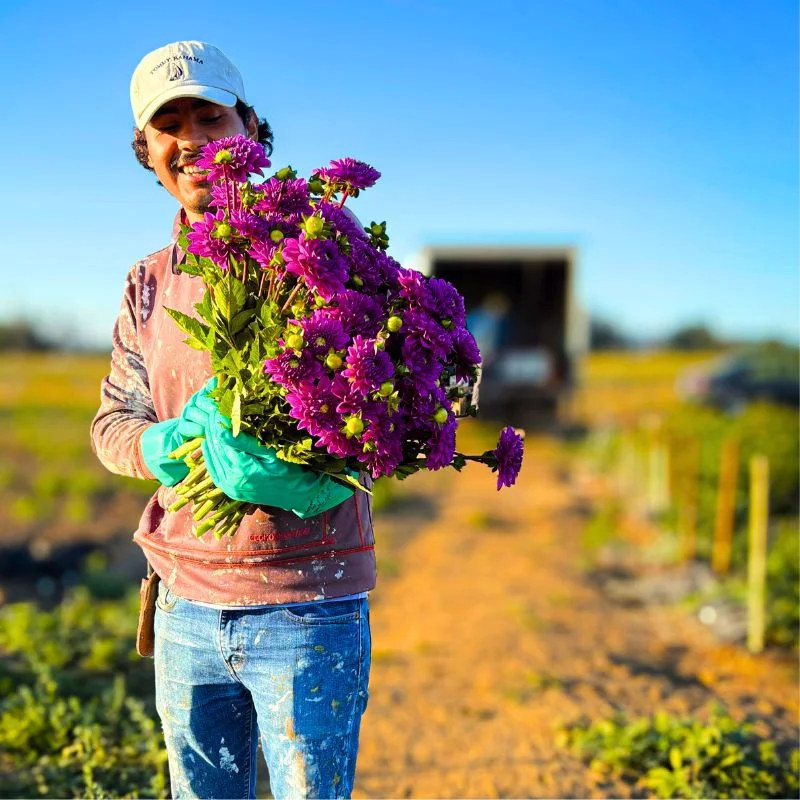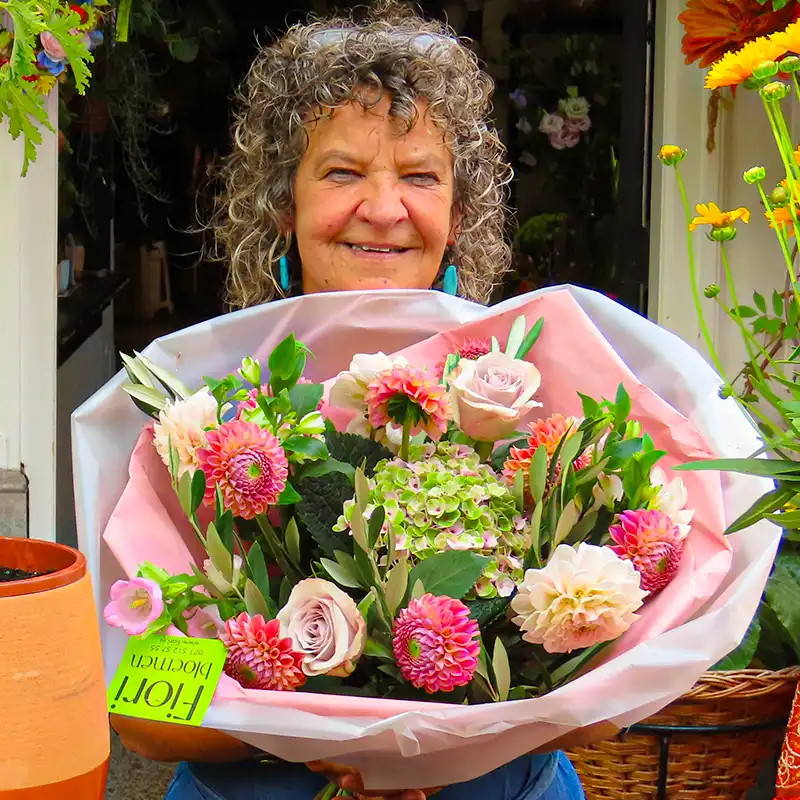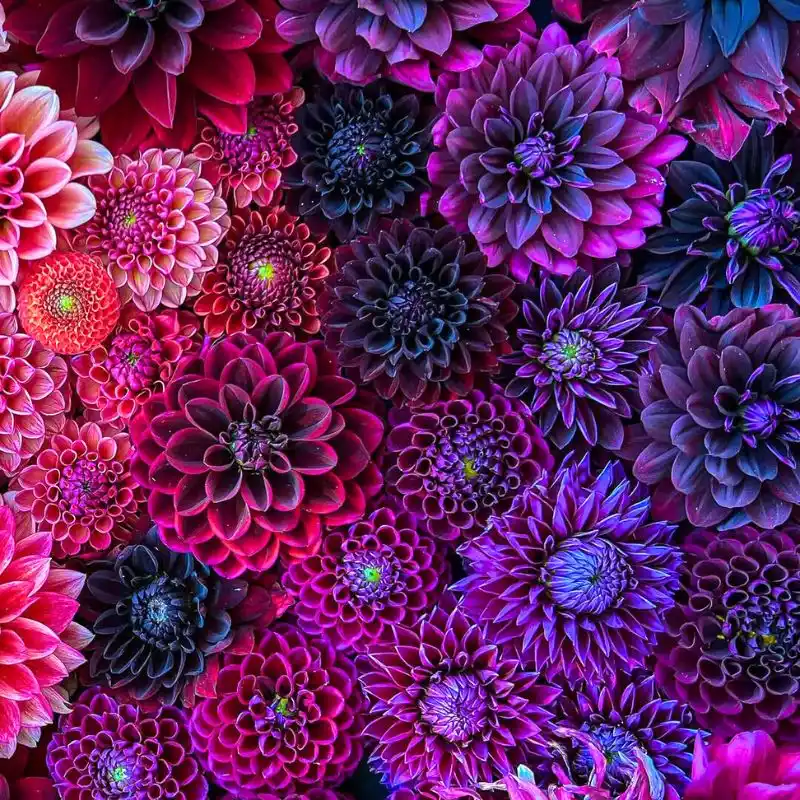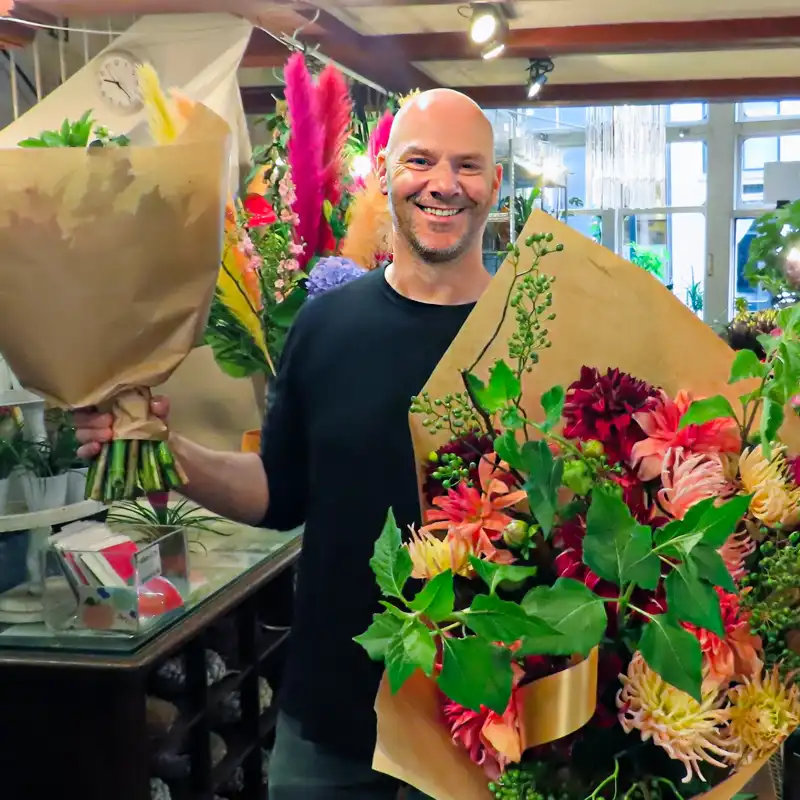Few names resonate as deeply with floriculture heritage as George van Haaster. With roots anchored in the famed bulb region of the Netherlands and decades of experience in lily cultivation and trade, George (70) is now devoting his energy to his new floral passion: the Dahlia. This isn’t just a story about breeding flowers — it’s about preserving a family tradition, embracing change, and pushing the boundaries of vase life with innovation and care.
The Family Heritage in Bulbs and Flowers
George’s journey in floriculture didn’t start with Dahlias. It began with his father, a respected dry bulb grower known for his obsessive dedication to quality. George, the third of ten children, was always drawn to the land where his father was working. Drawn to the beauty of the flowers and plants.
“I was the one helping my father in the field when others were out playing,”
He recalls it vividly. His father's passion for growing dry bulbs laid a strong foundation that shaped George’s future, first as a flower trader on different flower markets and later as a seasoned grower.
.jpg)
From an early age, George was surrounded by the rhythms of the seasons, the scent of soil, and the bustle of flower crates. Over the years, he witnessed the boom of Dutch floriculture — a deep-seated experience shaped his understanding of what makes a flower not just beautiful, but exceptional.
The Lily Years That Defined a Generation
Before turning to Dahlias, George van Haaster was renowned for his expertise in lily cultivation. For decades, he was the most respected lily grower in the Netherlands. His success stemmed from a combination of relentless experimentation, close relationships with top breeders, and a deep understanding of what international markets demanded. George was not content with standard varieties — he constantly sought out new genetics that could produce stronger stems, better bud counts, and more intense color. His fields often showcased varieties that other growers hadn’t even trialed yet.
Through his network, George gained early access to elite cultivars and was one of the first to introduce high-value lilies into premium markets. He sold directly to key players in Japan and other export hubs, often bypassing traditional auction routes to establish faster, high-trust supply lines. His attention to detail, from cultivation to post-harvest handling, meant his lilies fetched prices of up to €25 per stem — an exceptional figure that spoke volumes about his reputation. Those years in lilies shaped his eye for quality, and that same instinct now fuels his ambition in the world of Dahlias.
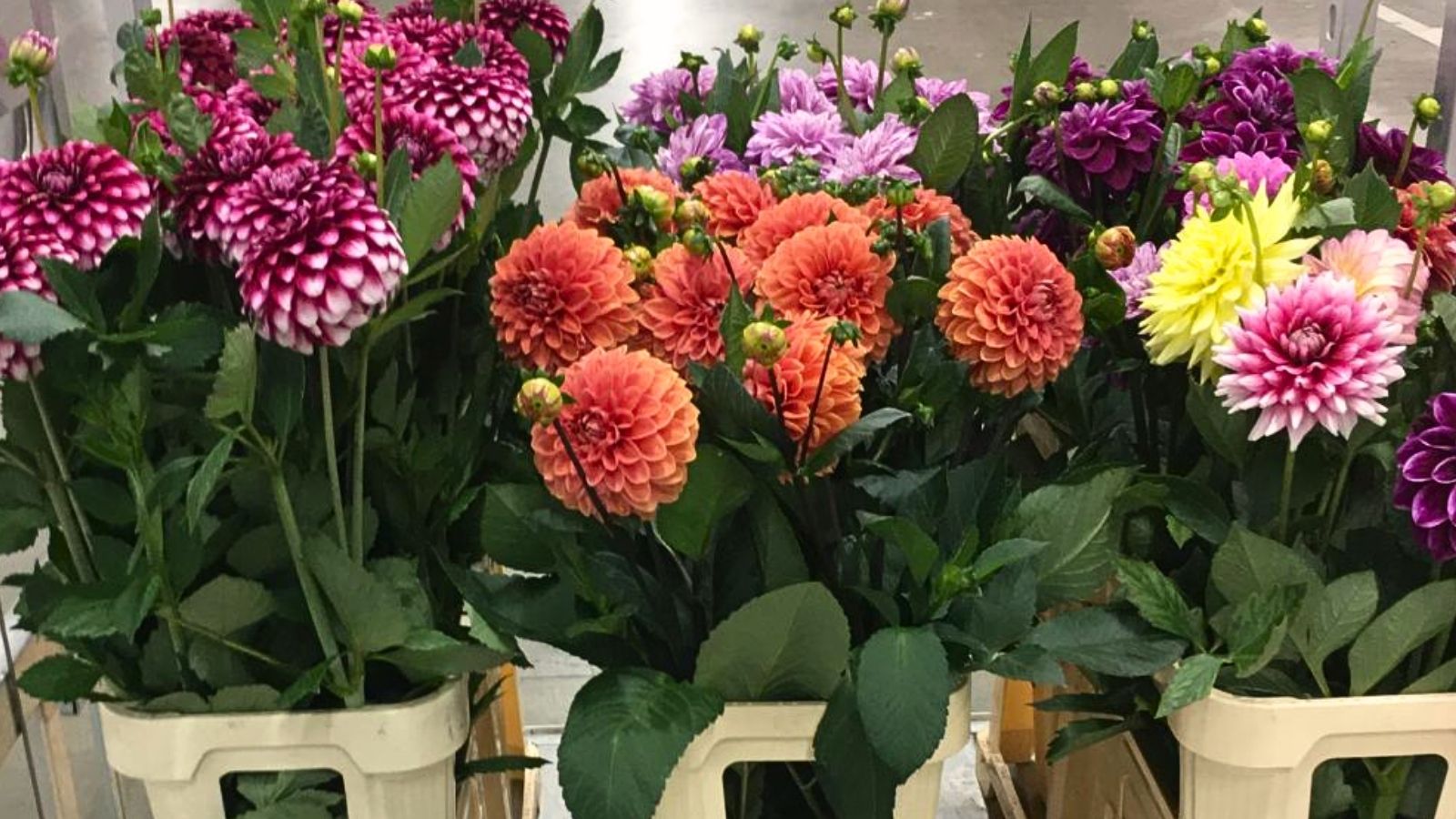
The Turning Point Toward Dahlias
After decades in lily production and flower trade, and some misfortune, George sought a new challenge — one where he could apply his knowledge and make a real impact. The Dahlia, with all its complexity and charisma, was the perfect candidate.
Where It All Began: Fred de Meulder and the Dahlia Spark
George’s love for Dahlias can be traced back to a pivotal period working with Fred de Meulder, a name known with reverence in the Dutch Dahlia world. At the time, George was still deeply involved in the flower trade and lilies, but it was during his visits to Fred’s fields that something shifted. Surrounded by a sea of colors and forms, he became intrigued by the untapped potential of the Dahlia as a cut flower. Fred’s passion was infectious, and George absorbed everything — from breeding philosophy to plant selection — often spending days immersed in the rows, learning through observation and dialogue. It was here that the seed was planted. Years later, that early spark would grow into a full breeding program of his own, driven by the same fascination Fred had shared with him decades earlier.
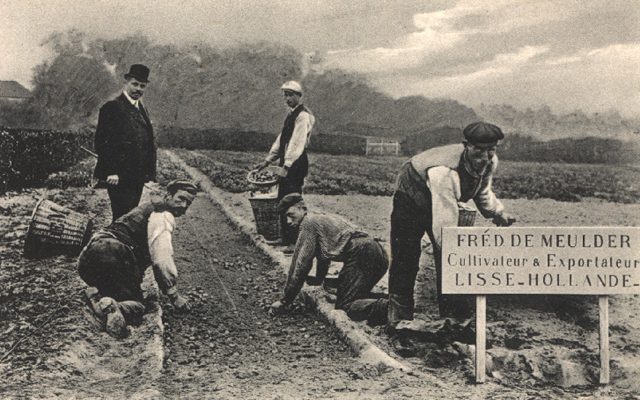
Laying the Foundation: The Early Dahlia Days
After those formative years with Fred de Mulder, George decided to take the leap and begin on his journey with Dahlias. But it wasn’t all smooth sailing. “I thought back then, it doesn't look good,” he recalls — the market was skeptical, and the Dahlia’s reputation in the professional cut flower world was far from solid. It was seen more as a hobbyist’s flower, visually striking but lacking the commercial viability that florists demanded. Still, George saw potential. At that point, he turned to Henk van Ewijk, one of the most respected figures in the Dutch Dahlia world. He purchased several varieties from Henk and began building his breeding program around them. With that foundation and the lessons he carried from his time with Fred, George committed himself fully to redefining Dahlia's place in professional floristry.
The Start of Breeding Dahlias
Those early encounters — from the inspiration sparked in Fred de Mulder’s fields to the grounded lessons learned from Henk van Ewijk’s varieties — were more than stepping stones. They marked the beginning of a personal mission. George saw firsthand both the magic and the limitations of Dahlias in the professional flower world. He recognized the need for structure, reliability, and performance if Dahlias were to compete on the global stage. So he began building not just a collection, but a vision. One rooted in craft, but sharpened by decades of commercial experience. With this blend of intuition and discipline, his real breeding journey began.
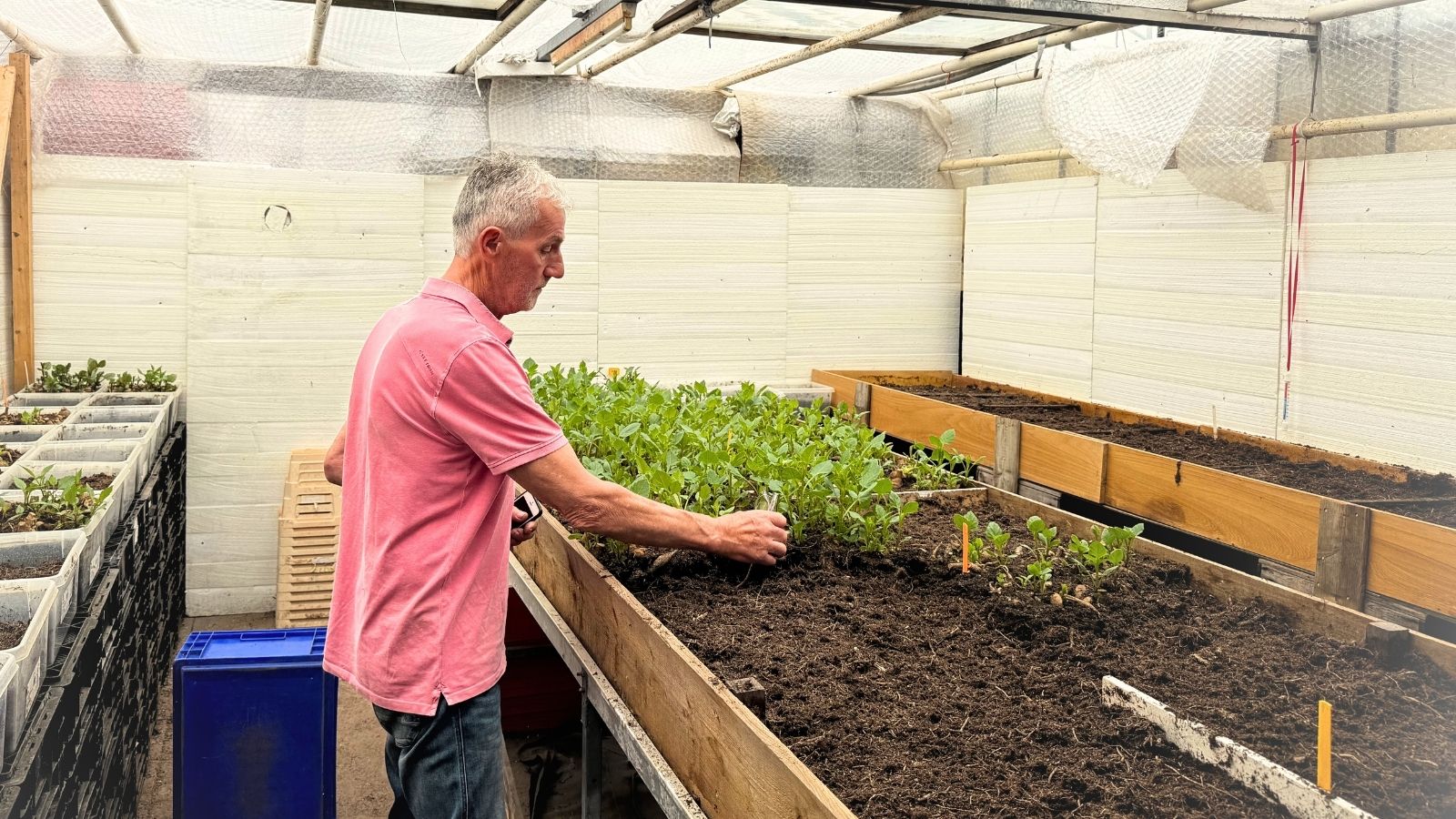
A Methodical and Creative Approach
What makes his work special is the methodical yet creative approach he takes. George carries out about 35 cross-breeds per year, seeking not just striking colors but resilience and vase life.
"You only need one or two good ones each year. The rest you discard — selecting, that’s part of breeding."
With an eye for detail and a commitment to longevity, his goal is clear: to create Dahlia varieties that are both show-stopping and practical for florists worldwide with a 7-day vase life.
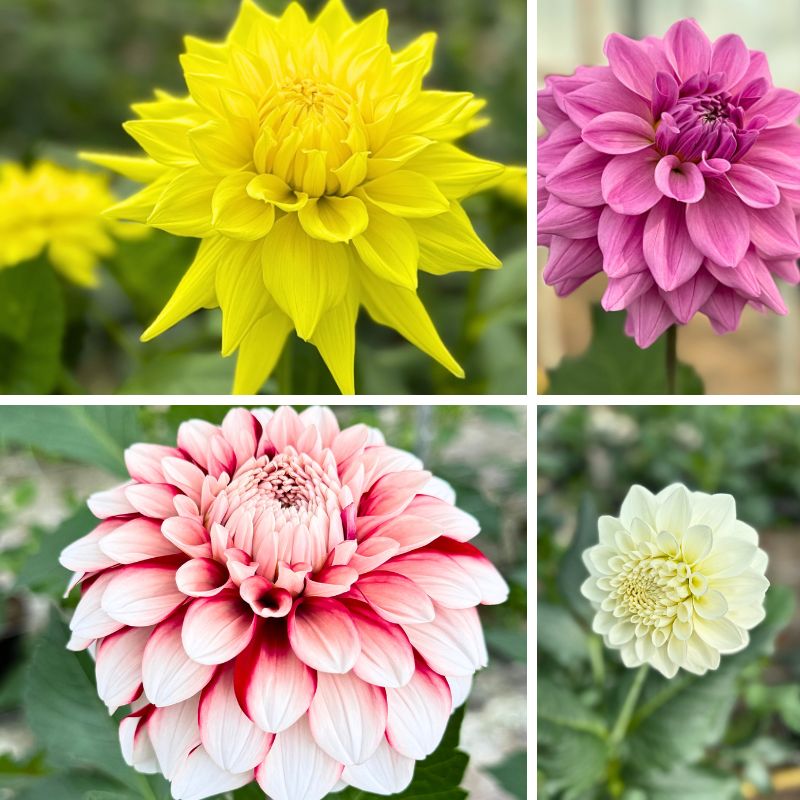
You Want Early Access to George’s Dahlias?
The first results of George’s breeding efforts are not just visible — they’re already available. Several of his new Dahlia varieties are growing in his own greenhouse, where he closely monitors every stage of development. In addition, a professional-scale crop is being cultivated by Edwin Burgers at his nursery ‘Nooitgedacht’. This collaboration ensures that the flowers are not only tested under optimal growing conditions, but also reach the hands of florists and designers eager to work with something truly special.
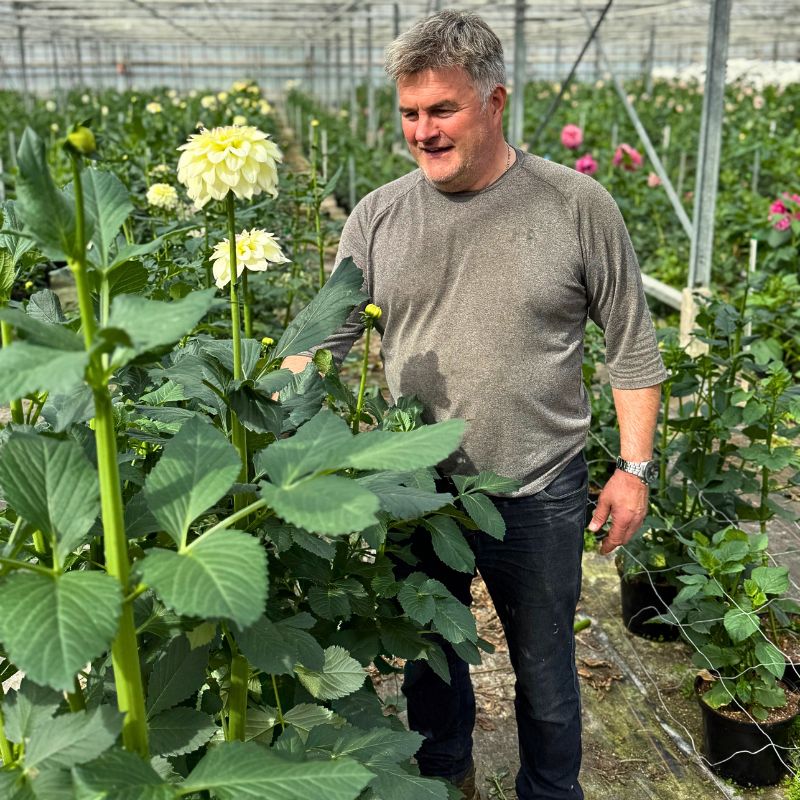
From Flowers to a Brand: The Birth of Top^dahlia
The journey from field to market involves more than just cultivation. It’s also about identity and connection. George and Edwin developed the brand “Top^dahlia,” giving each flower a woman’s name. This choice stems from both respect and recognition — honoring women while humanizing each variety. George:
“When a flower has a name, it becomes personal.”
One standout variety is named Dazz Corrie — a name that reflects the dignity and style he wants his flowers to embody. (George's wife, the most important woman in his life).

Dazzling and Personal
George has chosen a distinctive naming approach for his Dahlia varieties: each one carries the prefix 'Dazz', short for 'Dazzling', followed by a woman’s name. The idea is rooted in his desire to highlight the captivating beauty of each flower — bold, elegant, and unforgettable, just like a dazzling personality. But the choice to pair this with a woman’s name is also intentional. It is George’s tribute to the strength, grace, and individuality he sees reflected both in his flowers and in the women who have shaped his life and work.
“Flowers deserve a name with soul, and a woman’s name gives that sense of presence and character.”
This naming convention also supports the Top^dahlia brand strategy, making each variety more relatable and memorable for buyers and florists. Just like fashion houses name collections after muses, George’s Dahlias tell stories of color, resilience, and personality, all beginning with that striking yet straightforward prefix: Dazz.

Facing the Realities of the Market
Dahlias are stunning, especially the large-flowered ones. But their market appeal is limited by one key challenge: shelf life. Large-flowered Dahlias often fade after three or four days, making florists hesitant to source them. George is determined to change this perception. By selecting for strength and structure, such as short foliage and sturdy stems, he aims to introduce reliable, long-lasting varieties with large flowers to the market.
This approach aligns with broader market shifts. Gone are the days of racing to the bottom with cheap bulk flowers. Today’s buyers seek quality, story, and distinction. George sees opportunity in reaching niche audiences through specifically chosen partnerships.
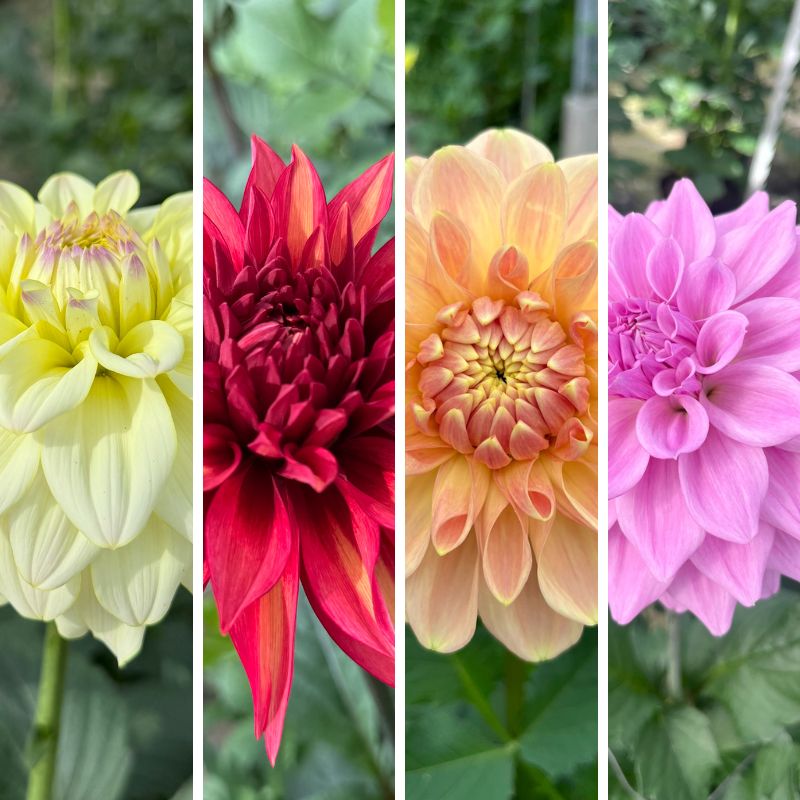
Collaboration, Craft, and Continuity
George's journey is deeply rooted in collaboration — a shared pursuit of excellence with a close-knit circle of trusted professionals. His direct network consists of four key figures who each bring specialized expertise to the table, complementing George’s own vision and breeding skills.
Eddy van der Weijden, a seasoned export veteran with over thirty years of experience, plays a vital role in testing each variety. He meticulously evaluates vase life, bloom size, color intensity, stem strength, and leaf positioning. His commercial insight ensures that the flowers not only perform in the field but also meet the demanding expectations of florists and end buyers.
Edwin Burgers cultivates both Dahlias and Hydrangeas at his nursery ‘Nooitgedacht’, where a number of George’s varieties are already being professionally grown. Edwin’s role bridges trial and scale, transforming promising new genetics into consistent, high-quality crops ready for the market.
Dick van Haaster, George’s brother, brings an economic and strategic perspective. With a background in finance, he provides oversight on budgeting, scaling, and positioning, helping guide the brand through growth while keeping the foundation solid. Dick’s involvement ensures that passion is balanced with long-term planning.
And then, of course, there is George himself — the heart of the operation — who combines decades of horticultural expertise with a creative drive to redefine what Dahlias can be. Together, this team represents more than a business. It’s a shared commitment to raising the standard in Dahlia breeding, one flower at a time.

The Art and Timing of Dahlia Breeding
Success in Dahlia breeding also comes down to timing. From taking cuttings in spring to planting mid-May through June, each phase is carefully calculated. George observes his varieties both in pots and open ground, preferring pots for control and visual consistency. He evaluates each flower not just for appearance but also for its adaptability and resilience under different conditions.
While modern growers may rely on machines, George still embraces hands-on selection. “You have to feel it, see it, smell it,” he says. And although the work is demanding, especially given his physical limitations and his age, his dedication remains unwavering. His garden is not just a test plot, but a living gallery of his vision.
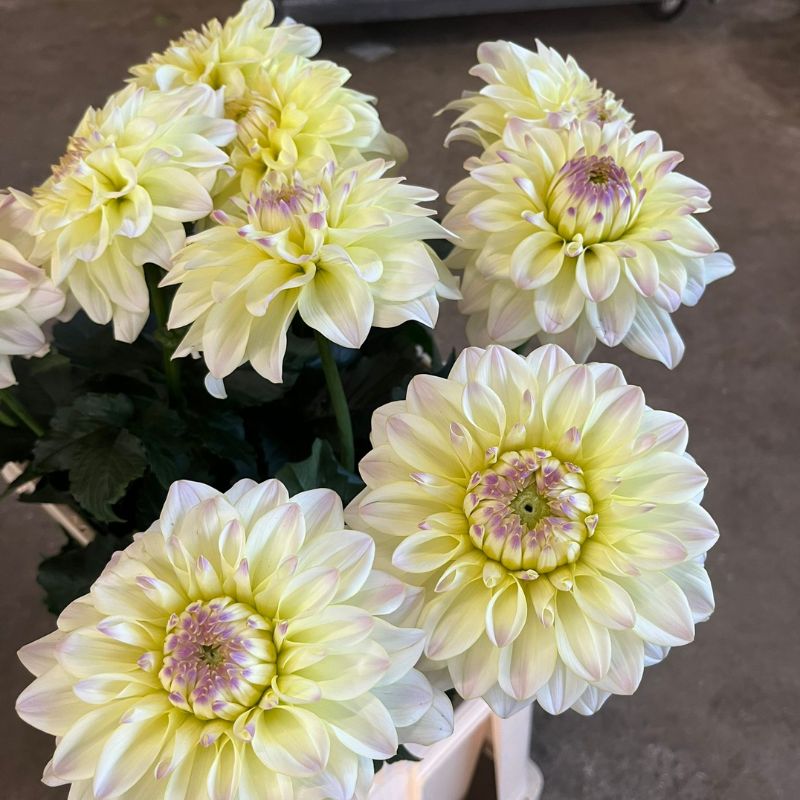
Looking to the Future
What’s next for George van Haaster? More breeding, more selection, and perhaps most importantly, more storytelling. Plans are already in place for a mid-summer visit to the field to witness the Dahlias in flower. There's discussion about launching new packaging concepts, connecting with buyers of plant material in South America and Kenya, and refining the Top^dahlia brand with fresh logos and design elements inspired by Fibonacci and an all-seeing eye.
Ultimately, George’s mission goes beyond market share. It’s about leaving a legacy — one built on quality, vision, and respect for nature’s rhythms. His Dahlias carry not only the genetic imprint of his selections, but also the memory of a father who loved the land and passed that love on. In each flower, that story continues to unfold.
With early production already underway in both his personal greenhouse and at Edwin Burgers’ professional nursery Nooitgedacht, George’s Dahlias are not just a promise for the future — they are blooming into reality now. For florists, designers, and traders seeking originality and quality, the season to discover them has already begun.
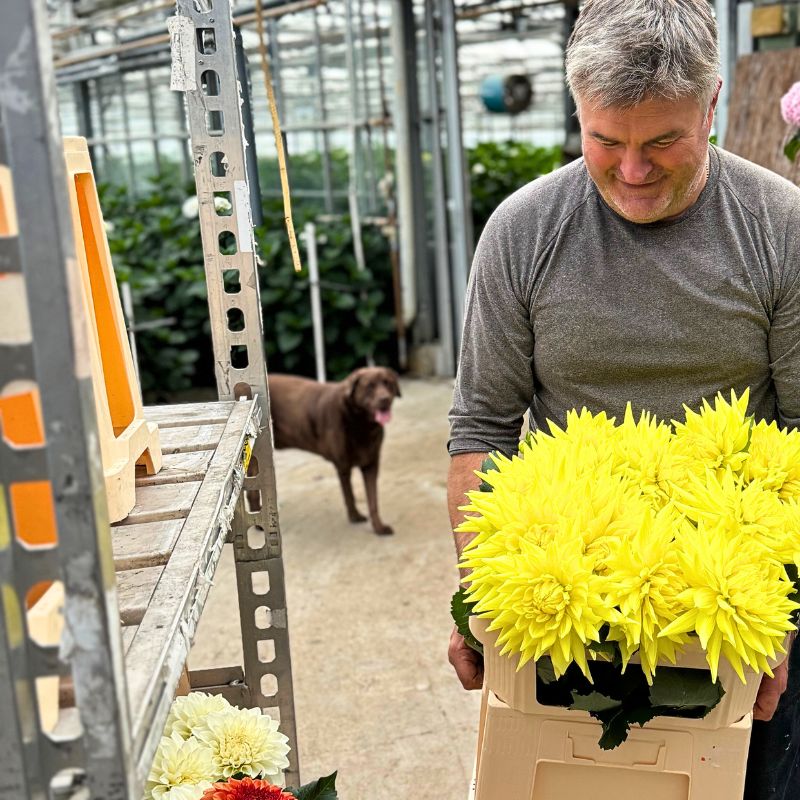
Discover More Floral Stories
The Dahlia journey of George van Haaster is just one example of the passion and innovation alive in the world of floriculture. Explore more breeder stories, flower trends, and design insights on Thursd — where the global floral community gathers to inspire and grow.

